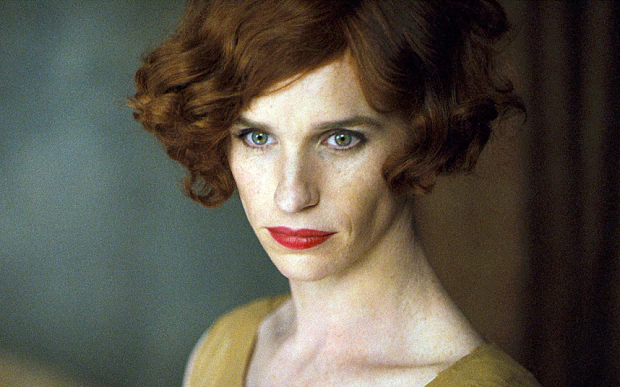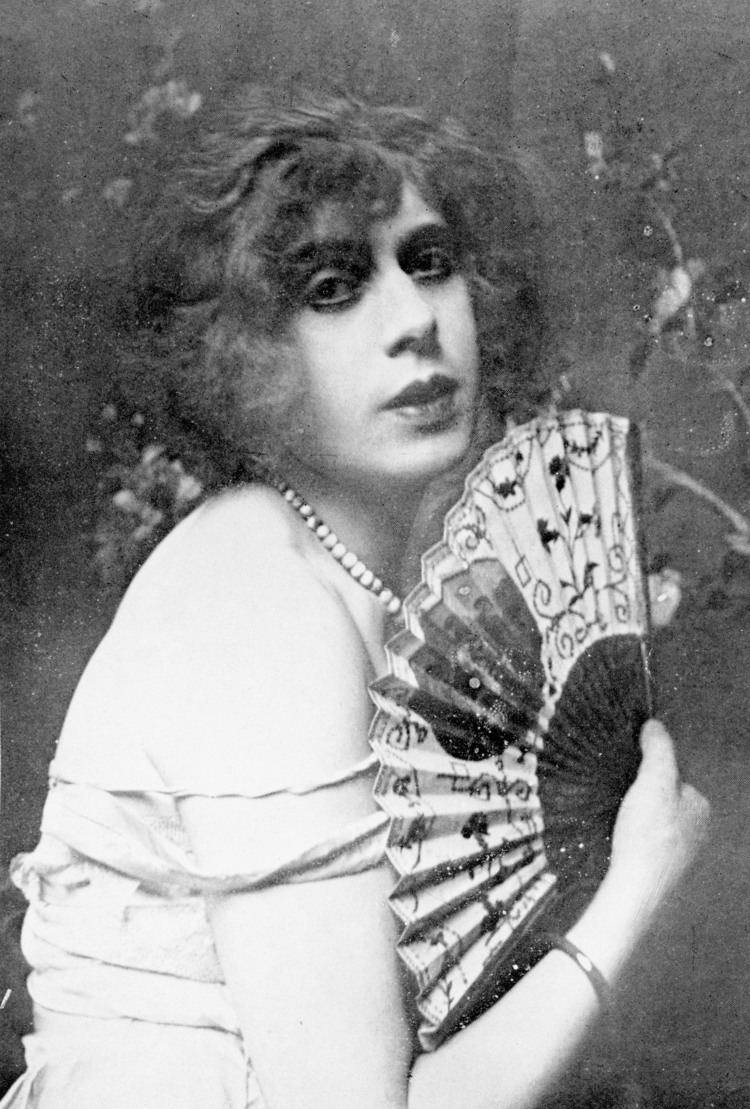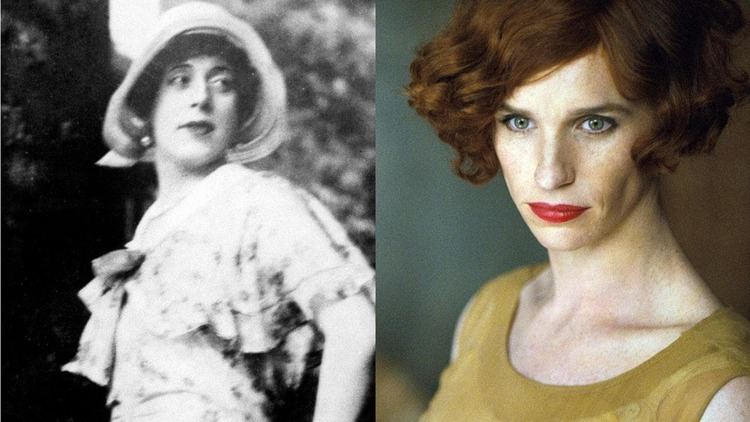Other names Lili Ilse Elvenes Name Lili Elbe | Role Artist | |
 | ||
Full Name Einar Magnus Andreas Wegener Spouse Gerda Wegener (m. 1904–1930) Parents Ane Marie Thomsen, Mogens Wilhelm Wegener Similar People Gerda Wegener, Eddie Redmayne, Tom Hooper, David Ebershoff, Alicia Vikander | ||
The Danish Girl Featurette - Lili Elbe (2015) - Eddie Redmayne Drama HD
Lili Ilse Elvenes, better known as Lili Elbe (28 December 1882 – 13 September 1931), was a Danish transgender woman and one of the first identifiable recipients of sex reassignment surgery. Elbe was born Einar Magnus Andreas Wegener and was a successful painter under that name. She also presented as Lili (sometimes spelled Lily) and was publicly introduced as Einar's sister. After successfully transitioning in 1930, she made a legal name change to Lili Ilse Elvenes and stopped painting altogether.
Contents
- The Danish Girl Featurette Lili Elbe 2015 Eddie Redmayne Drama HD
- Exhibit explores life of danish trans woman lili elbe
- Marriage and modelling
- Surgeries and dissolution of marriage
- Death
- Lili Elbe x Dora Richter the first sex reassignment surgery
- In popular culture
- References

The name "Lili Elbe" was made up by Copenhagen journalist Louise "Loulou" Lassen. Lili died from complications involving a uterus transplant.

Her autobiography, Man into Woman, was posthumously published in 1933.

Elbe's year of birth is sometimes stated as 1886. This appears to be from a book about her, which has some facts changed to protect the identities of the persons involved. Factual references to the life of Elbe's wife Gerda Gottlieb indicate that the 1882 date is correct since they clearly married while at college in 1904, when she would have been just eighteen if the 1886 date were correct.

It is likely that Elbe was an intersex person, although that has been disputed. Some reports indicate that Elbe already had rudimentary ovaries in her abdomen and she may have had Klinefelter syndrome.
Exhibit explores life of danish trans woman lili elbe
Marriage and modelling
Wegener met Gerda Gottlieb while they were students at the Royal Danish Academy of Fine Arts in Copenhagen, and they married in 1904, when Gottlieb was 19 and Wegener was 22. The two of them worked as illustrators, with Elbe specializing in landscape paintings, while Gottlieb illustrated books and fashion magazines. They both traveled through Italy and France, eventually settling in Paris in 1912, where Elbe could live openly as a woman, and Gottlieb a lesbian. Elbe received the Neuhausens prize in 1907 and exhibited at Kunstnernes Efterårsudstilling (the Artists Fall Exhibition), at the Vejle Art Museum, and in the Saloon and Salon d'Automme in Paris. She is represented at Vejle Art Museum in Denmark.
Elbe started dressing in women's clothes after filling in for Gottlieb's absentee model; she was asked to wear stockings and heels so her legs could substitute for those of the model. Elbe felt surprisingly comfortable in the clothing and began identifying as a woman. Over time, Gottlieb became famous for her paintings of beautiful women with haunting, almond-shaped eyes dressed in chic fashions. In 1913, the unsuspecting public was shocked to discover that the model who had inspired Gottlieb's depictions of petites femmes fatales was in fact Gottlieb's spouse, "Elbe".
In the 1920s and 1930s, Elbe regularly presented as a woman, attending various festivities and entertaining guests in her house. One of the things she liked to do was disappear, wearing her modeling fashions into the streets of Paris in the throngs of revelers during the Carnival. Elbe was introduced by Gottlieb as Einar Wegener's sister when she was dressed in female attire. Only her closest friends knew once she had transitioned.
Surgeries and dissolution of marriage
In 1930, Elbe went to Germany for sex reassignment surgery, which was experimental at the time. A series of four operations were carried out over a period of two years. The first surgery, removal of the testicles, was made under the supervision of sexologist Magnus Hirschfeld in Berlin. The rest of Elbe's surgeries were carried out by Kurt Warnekros, a doctor at the Dresden Municipal Women's Clinic. The second operation was to implant an ovary onto her abdominal musculature, the third to remove the penis and the scrotum, and the fourth to transplant a uterus and construct a vaginal canal.
At the time of Elbe's last surgery, her case was already a sensation in newspapers of Denmark and Germany. A Danish court invalidated the Wegeners' marriage in October 1930, and Elbe managed to get her sex and name legally changed, including receiving a passport as Lili Ilse Elvenes. She stopped painting, believing it to be something that was part of the identity of Einar. Since Elbe and Gottlieb were no longer man and wife, their marriage was officially dissolved. After the dissolution of her marriage, Elbe returned to Dresden for a final surgery.
Death
Elbe began a relationship with French art dealer Claude Lejeune, whom she wanted to marry and with whom she wanted to have children. She was looking forward to her final surgery involving a uterus transplant.
In June 1931, Elbe had her fourth operation, which consisted of implanting a uterus and the construction of a vagina, both of which were new and experimental procedures at that time. Her immune system rejected the uterus, however, and she developed an infection. She died on September 13, 1931, three months after the surgery, of cardiac arrest brought on by the infection.
Elbe was buried on Trinitatisfriedhof in Dresden. The grave was levelled in the 1960s. In April 2016, a new tombstone was inaugurated. It was financed by Focus Features, the production company of The Danish Girl.
Lili Elbe x Dora Richter: the first sex reassignment surgery
Elbe was not the first transgender woman to undergo sex reassignment surgery. Dora Richter/Dörchen R., born as Rudolph Richter (b. 1891—sometimes referred to as Rudolph R.), who even early on in childhood displayed a "tendency to act and carry on in a feminine way", was castrated at her own request in 1922, when Magnus Hirschfeld arranged for a bilateral orchidectomy (castration) for her and began investigating the impact that reduced testosterone had on her anatomy. She worked as a domestic at Hirschfeld's Institute for Sexual Research, dressed as a woman. Hirschfeld affectionately called her Dörchen (little Dora) and published her transformation process as a trans woman in his work on gender studies titled Geschlechtskunde. Dr. Felix Abraham, a psychiatrist working at the Institute for Sexual Research, published Dörchen's gender transformation as a case study: "Her castration had the effect – albeit not very extensive – of making her body become fuller, restricting her beard growth, making visible the first signs of breast development, and giving the pelvic fat pad... a more feminine shape."
In June 1931, when Dora Richter/Dörchen R. was about 40 years old, her penis was amputated by the Institute physician Dr. Levy-Lenz, and then an artificial vagina was surgically grafted by the Berlin surgeon Prof. Dr. Gohrbandt. Dora became the first transgender woman of whom records remain to undergo vaginoplasty. According to Dr. Felix Abraham, her "first step to feminization was made by means of castration" in 1922. "After this there was a long pause, until the beginning of the year 1931, when the penis amputation was done and in June, the here described surgery"—a highly experimental vaginoplasty performed by Dr Erwin Gohrbandt (1890–1965). The highly experimental operation, which included the first attempt at vaginoplasty, was a remarkable success, and the resulting publicity was enough to lure Lili to the Institute. Lili's case was far more high-profile than Dörchen's.
Elbe became the second transgender woman to undergo Gohrbandt's vaginoplasty technique in 1931. Her castration and penectomy had been performed by Dr. Ludwig Levy-Lenz (1889–1966) the previous year. These preliminaries have sometimes caused confusion over the date of her reassignment surgery. Gohrbandt's surgery deliberately left remnants of the scrotum intact, with a view to modifying these into labia at a later date, but for reasons that are unclear, he did not perform this further procedure himself. Instead, Elvenes' case was taken over by Dr. Kurt Warnekros (1882–1949), a member of the Nazi Party, at the Dresden Women's Clinic. Here, the labiaplasty and a subsequent surgical revision led, in the pre-antibiotic age, to Elbe's death from infection in September 1931.
The ritual book-burning at the Institute for Sexual Research by Nazi students in May 1933, the obliteration of the Dresden Women's Clinic and its records in the Allied bombing raids of February 1945, and the myth-making process itself have left gaps and inconsistencies in the Lili Elbe narrative that may never be resolved.
In popular culture
The LGBT film festival MIX Copenhagen gives four "Lili" awards named after Elbe.
In 2000, David Ebershoff wrote The Danish Girl, a fictionalized account of Elbe's life. It was an international bestseller and was translated into a dozen languages. In 2015, it was made into a film, also called The Danish Girl, produced by Gail Mutrux and Neil LaBute and starring Eddie Redmayne as Elbe. The film was well received at the Venice Film Festival in September 2015, although it has been criticized for its casting of a cisgender man to play a transgender woman. Both the novel and the film omitted topics including Gottlieb's sexuality, which is evidenced by the subjects in her erotic drawings, and the disintegration of Gottlieb and Elbe's relationship after their annulment.
